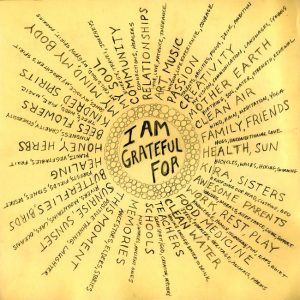T he month of November is often associated with the holiday of Thanksgiving. Most likely, we all share a similar memory, which includes an amalgam of images, smells, and experiences defining our holiday experience. Right now, even as you are reading this, you are probably salivating for turkey, stuffing and mashed potatoes, imagining your families gathering around extended tables, eating way too much food, and watching football all day. Or maybe you’re dreading that family tradition of fighting against crowds and traffic on the busiest travel day of the year.
he month of November is often associated with the holiday of Thanksgiving. Most likely, we all share a similar memory, which includes an amalgam of images, smells, and experiences defining our holiday experience. Right now, even as you are reading this, you are probably salivating for turkey, stuffing and mashed potatoes, imagining your families gathering around extended tables, eating way too much food, and watching football all day. Or maybe you’re dreading that family tradition of fighting against crowds and traffic on the busiest travel day of the year.
Whatever your association is with Thanksgiving, it’s probable that the actual focusing on giving thanks is not at the forefront of your mind. Sure, maybe you go around the table to all say something you’re thankful for, but it’s often quick, obligatory and really, you just want to get to those potatoes before the steam subsides. And while I know that some families do make more of an intention to focus on a stating their deeper thanks for the non-tangible, true meaning-of-life sorts of things, it does seem that the true essence of thanks-giving doesn’t get as much attention as maybe it could or should.
How might your life change – for the better – if you cultivated a year-round practice of thanks-giving? Another, more current buzzword for this is gratitude. And it turns out that there is a lot of research showing that practicing gratitude is not only important, it can change your life.
The leading expert in the field, Robert Emmons, defines gratitude as “an affirmation of goodness. We affirm that there are good things in the world, gifts and benefits [whether tangible or intangible] we’ve received…and we recognize that the sources of this goodness are outside of ourselves.” These outside sources can vary from other people, nature or even a higher power, and placing focus outside ourselves allows us to pay attention to what we do have, rather than what we lack.
Studies consistently find that looking for the good will result in being happier, healthier and finding more satisfaction out of life. In fact, one study that had a control group write down 5 positive things each day, concluded that participants felt more optimistic about their lives. They also exercised more and had fewer visits to doctors, as compared to the group who focused on sources of aggravation.
And guess what happens when we start feeling more positive? It leads to more positivity! Additional benefits of developing an attitude of gratitude include:
- Stronger immune systems; lower blood pressure
- Higher levels of positive emotions, which help contribute to more joy, optimism, and happiness
- More generosity and compassion towards others
- Less loneliness and isolation
- Improved relationships by feeling closer and more connected
- Increased ability to manage difficult emotions and greater resiliency
- Better sleep, and less bodily aches and pains
So how do you start? Simply set the intention to look for the good. And when you start, it becomes easier to continue to find it.
Here’s how:
- Keep a gratitude journal – look back on it when you’re feeling down
- Pay it forward; you can’t help but feel good when being generous
- Say thank you more often – to everyone from your loved ones to the baristas behind the counter; you’ll make their day!
- Focus on what you’ve accomplished in addition to what is left on your to-do list
- Be appreciative for your partners – building up their positive emotional bank will benefit when a conflict arises
I do know that sometimes, in dark moments, it may be hard to find something to be grateful for. So, I offer you this: at the very least, you have your breath. And as Jon Kabat-Zinn, the grandfather of mindfulness in the Western world says, “As long as you are breathing, there is more right with you than wrong with you.” Even if the worst case scenario is happening, as long as you are breathing, you are already getting through it. So, during this holiday season, I invite you develop a practice of gratitude – notice how it makes you feel and be grateful that you have the power to shift to positive awareness.
**This article originally featured in November 2016 issue of Alive magazine

